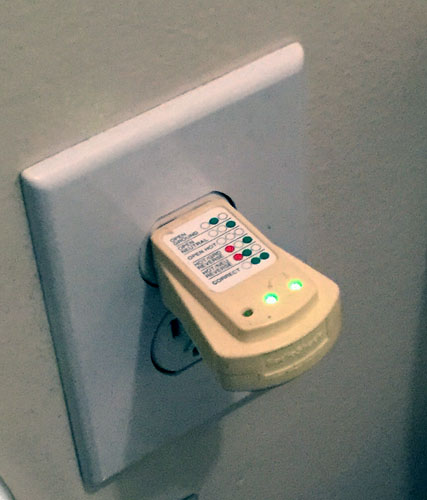UPDATE (electrical hum): I think I solved my initial problem here, though I have not tested yet (I do not have a studio and it’s a bit of an ordeal to set up for recording) but I will ASAP, to confirm this. I found a problem with my cordless phone base plugged into the wall nearby (a transformer type, I think it’s called, plug, the next outlet over (from where my computer is), when I was listening to a John Lee Hooker CD (on a radio on the same outlet as the phone base) … ‘John left plenty of silence in his recording/performance style for me to notice the hum!’ So I troubleshot’ by first and obviously unplugging the transformer type plug … then … the CD’s silent interludes were crystal clear! I also, luckily, had another phone I then switched out, also with a transformer type plug, though seemingly newer and smaller. I have had no problem since…with the CD anyway…at this point.
UPDATE TO ABOVE UPDATE: No this did not fix the hum when recording, only unplugging my computer and running on battery power does (as mentioned — it did get the hum out of my CD player though).
Reply to Steve’s (much appreciated!) Wed Mar 27, 2019 11:48 am post:
ANSWER: mic’s I have (i.e., capability):
- a thrift store dynamic mic with a 1/8 (3.5mm) plug.
- the built in mics (left, right) on the DR05
STEVE’S QUESTIONS: “…how you are doing that with a UCA222. The inputs on this device are “line level”, and Audacity can only record from one “device” at a time…?”
“Is there a mixer in your setup?”
ANSWER: no.
“Are you using the DR05 as an analog mic with the line output straight into the UCA222 ?”
ANSWER: I used the DR05’s ext/mic jack (in) for my dynamic mic, then with DR05 in stanby recording mode I recorded via the DR05’s headphone jack (out) into one of the two UCA222 channels in.
The DR05’s headphone jack is the only out on the DR05 so it’s either that or recording on the DR05 then uploading/transferring the file to my computer afterwards.
Also, the recordings are all mono, 1. from the DR05 (vocals) into one of the UCA222’s RCA channel (left or right) and 2. from the guitar amp’s external speaker out (jack) into the other UCA222’s RCA channel in (left or right). Then Audacity captures it as a stereo recording.
Mic vs. Direct
“ribbon mics…Eddie Kramer even goes as far as to say that “to me, the best guitar mic is the Beyer M160, which I’ve used for 30 years on Hendrix, on Zeppelin, on everybody.”” … “Eddie Kramer’s discussion of his Hendrix sessions reveals a similar preference: “Generally speaking, it was either a U67 or a Beyerdynamic M160, or a combination of both, which I still use today. It might be slightly different, of course, but the basic principle’s the same — a ribbon and a condenser.”” *
— soundonsound.com, Guitar Amp Recording |By Mike Senior.
- Eddie Kramer (references) … Jimi Hendrix: Are You Experienced?, Axis: Bold As Love, Electric Ladyland, Band Of Gypsys, The Cry Of Love; Led Zeppelin: Led Zeppelin II. — references excerpted from the ‘Guitar Amp Recording’ article.
These are great recordings for me, ‘Hendrix, Zeppelin’, but that was the analog era … (?) Just saying.
Thanks for this article link Steve, yes all miking the amp though not all my favorite recordings/sounds/productions … of course I’m sure not many (overall) are going to share their coveted techniques/secrets.
I’m currently reading “Chasing Sound” by Susan Schmidt Horning, just started, though early on ‘recordists’ had a curtain between them and the artists they were recording to protect their techniques/secrets from being stolen.
Thanks Steve, for the signal levels info list and DI article link/info.







